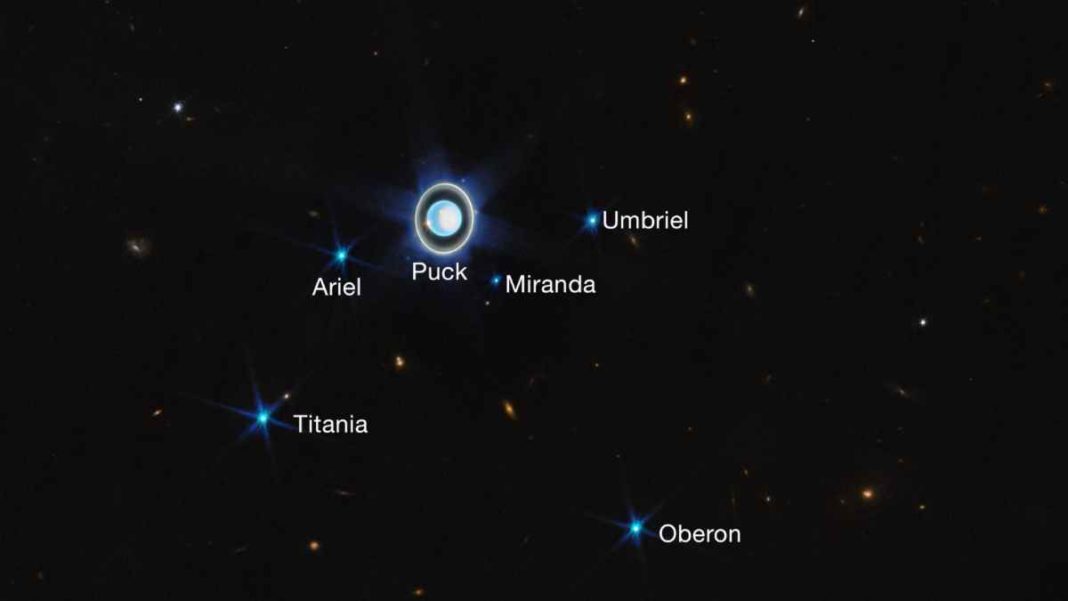UNITED STATES: Recent data analysis and computer modelling suggest the presence of water at the edge of the solar system, specifically on four of Uranus’ largest moons: Ariel, Umbriel, Titania, and Oberon.
These moons likely contain a layer of ocean between their icy crusts and cores. The study also found evidence of chlorides and ammonia in the seas of these moons.
The researchers used data from Voyager-2, which flew around Uranus in the 1980s, and combined it with additional findings from NASA’s Galileo, Cassini, Dawn, and New Horizons missions to build computer models.
These models revealed that the moons are likely insulated enough to retain the internal heat needed to host an ocean and that rocky mantles in the moons may release hot liquid, which would help maintain a warm environment for the ocean.
Miranda, the innermost moon in the system, was found to have surface features that suggest it may have held enough warmth to maintain an ocean at some point.
This study is significant because it could help in the search for life beyond Earth and further our understanding of the mini-solar system surrounding Uranus.
The discovery of water on Uranus’ moons is not entirely unexpected. Planetary scientists have previously found evidence of oceans in several unlikely places in our solar system, including the dwarf planets Ceres and Pluto and Saturn’s moon Mimas.
However, this study offers new insights into the potential for water on Uranus’ moons and the mechanisms that may have created and sustained it.
The study’s lead author, Julie Castillo-Rogez of NASA’s Jet Propulsion Laboratory, stated that the findings could be relevant to other small bodies in the solar system that could be rich in water but have limited internal heat.
The study also suggests that future missions to Uranus and its moons, such as NASA’s upcoming Europa Clipper mission, could further our understanding of the potential for life beyond Earth.
Overall, the discovery of water on Uranus’ moons represents a significant step forward in our search for habitable environments in our solar system and beyond.
As our understanding of the complex and diverse worlds within our solar system continues to evolve, it may also pave the way for future exploration and discovery.
Also Read: Love Again: Priyanka Chopra Dons Nina Ricci Fall 2023 Gown on Film’s Premiere



